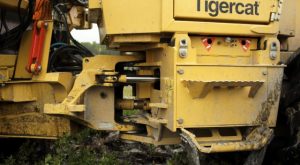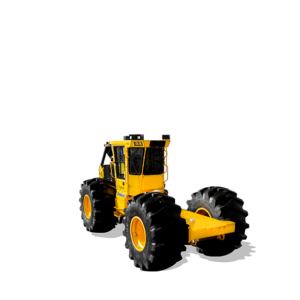– Paul Iarocci
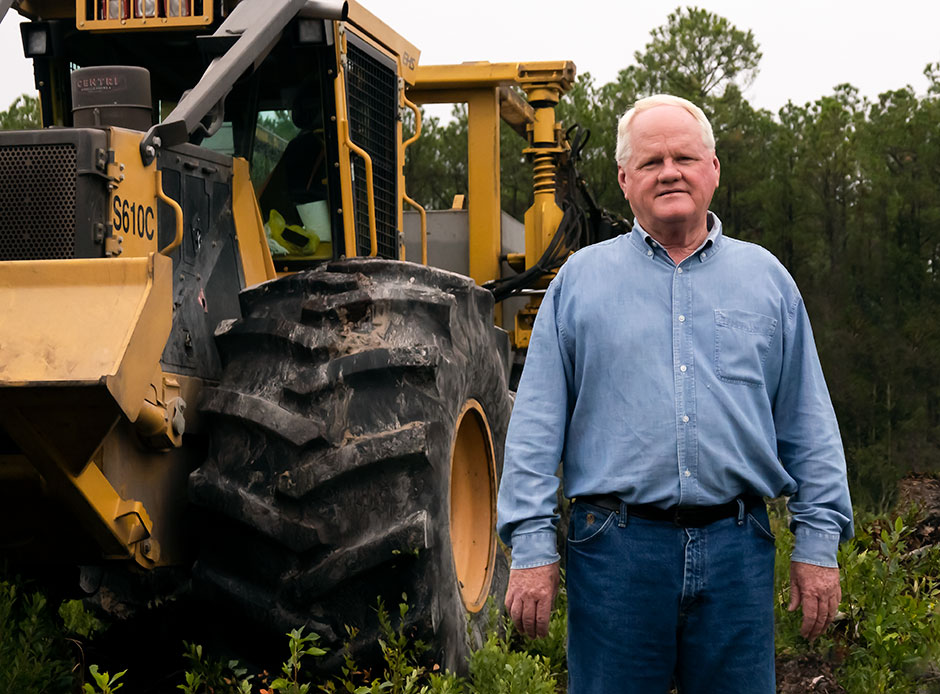
Donald Robbins, owner of Robbins Forestry Inc.
Robbins Forestry Inc. is a long-established multi-service company servicing timberland owners and stakeholders in Florida and Georgia. “We work for timber companies, paper companies and private landowners. We do fertilization, herbicidal spraying and mechanical tree planting,” explains Donald. “Our service provides a tremendous value. You can’t take herbicides and fertilizers out of farming, and it’s the same with forestry.” Donald estimates that fertilization alone provides at least a 25-30% boost to the productivity of a working forest. “It varies from site to site, but fertilization just adds tremendous value.”
TIGERCAT HAS BEEN WORKING WITH US NOW FOR OVER EIGHT YEARS.
WE ARE VERY PROUD OF WHERE WE HAVE GOTTEN TO.
THESE TRACTORS ARE A LOT MORE PRODUCTIVE AND A LOT SAFER FOR MY MEN,
– Donald Robbins, owner of Robbins Forestry Inc.
Site prep spraying, which is performed prior to planting, falls in a window between August and November. The next step is planting, which occurs in the winter months, when the trees are dormant and less susceptible to shock. A second spray treatment – performed after planting in spring – targets grasses and broad leaves. “Timing is a big factor in all of our spraying. Whether it is the fall spraying that we are doing now for gallberry control, oaks and any kind of hardwood, or herbaceous weed control which is done March through May. They are two different types of spray. Our goal is not eradication, it’s control.”
Fertilizing ranges from one to three different applications. The first phosphorous application is performed when the seedlings are two to three years old. Additional nitrogen and phosphorous applications occur later in the rotations. The fertilizer applications depend on what the landowner is trying to achieve at the end of the rotation – pulp, or saw timber.
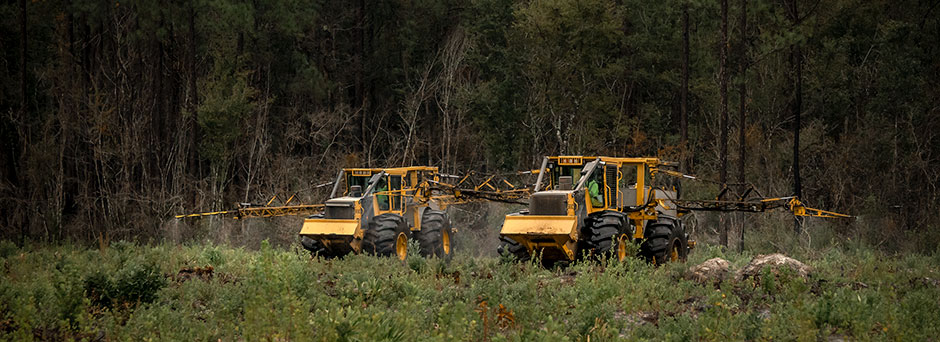
Two of Donald’s newest machines working in tandem in a site prep application.
Donald explains that when you look back at the last 30 to 40 years in harvesting, there has been tremendous progress in the machinery in terms of efficiency and productivity. “The same thing hasn’t happened in silviculture. All of the money is at the end of the rotation. People still view silviculture more as a cost and not an investment and that is the wrong way to look at it. It’s truly an investment. The decisions you make upfront are a direct reflection on what you are going to get at the end of the rotation.”
Historically, Donald battled overheating issues, whether it was the farm tractors or the previous skidder brand that he was running. “We could never cool down the tractor. You know down here it gets to be 95 degrees. We would have to shut down in the afternoon because it would be running too hot. We made a lot of changes, trying to improve on it. We moved some of the coolers from the front to the back and put an auxiliary fan on it. We did all of this ourselves and still were not able to cool the tractor down. Tigercat upfront was able to run the tractor at a good operating temperature and we haven’t had any issues at all with overheating. It is just a lot more dependable, a much better design.”
PEOPLE STILL VIEW SILVICULTURE MORE AS A COST AND NOT AN INVESTMENT AND THAT IS THE WRONG WAY TO LOOK AT IT.
– Donald Robbins, owner of Robbins Forestry Inc.
Donald is currently running six Tigercat spreaders – all purchased from Tidewater Equipment – and the oldest has acquired around 12,000 hours. The spreaders are a long-term investment. “We’re not able to trade like a logger,” Donald explains. “This is a specialty tractor. I just can’t go down to Tidewater and trade it in on a brand new one.” In the absence of a used equipment market, Donald needs to be able to run the machines into very high hours while guarding against downtime and excessive mechanical repair costs. For those reasons, Donald is meticulous with regard to fleet maintenance and service intervals. He doesn’t cut corners with fluids or filtration, acknowledging that a little upfront investment can save a lot down the road.
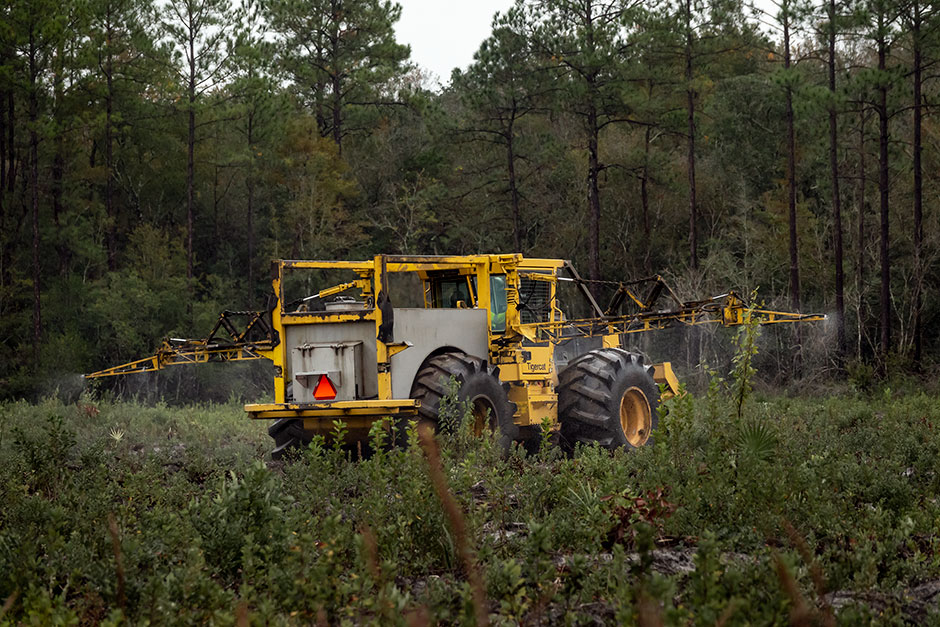
Tigercat supplies the base carrier but that is only the beginning for Donald, who is challenged with the design and installation of
the tanks and spraying equipment.
Uptime is crucial because silviculture work is even more seasonal than logging. “All of our work is seasonal work. We have a window and we want to do as many acres in that window as we can get. Rain, wind, both of those are big issues with the sprayer. One thing about ground versus aerial is that we are able to spray in winds and up to a ten mile an hour wind. A helicopter can only spray up to seven.”
From an environmental perspective, Donald’s ground-based equipment offers other advantages over aerial spraying methods. “I feel a lot better with ground equipment over aerial equipment, especially down here where we are not but two miles from the Okefenokee Swamp. All of these creeks flow into the swamp. So we are very concerned about where we put our product. With ground-based equipment running at a maximum of 8 km/h (5 mph), Donald feels that he has a lot more control compared to a helicopter traveling at 100 km/h (60 mph).
“The Tigercats are really the future and the heart of our operation. Tigercat has been working with us now for over eight years. We are very proud of where we have gotten to. These tractors are a lot more productive and a lot safer for my men,” Donald asserts. “I am impressed with the young engineers and their attitudes and how they handle their problems, which are our problems. Everybody just seems excited about what we are doing and that makes us excited about it.”
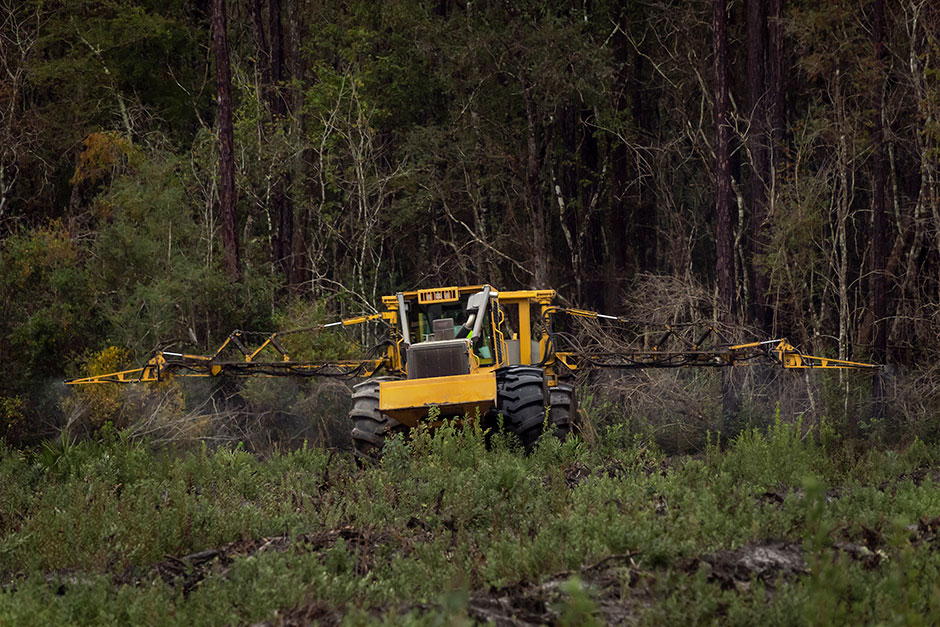
The machines are designed to travel between or over the beds depending on tire size and wheel offset. “The newer machines are nine and a half feet wide with 35.5 tires and we are straddling the bed going down. The other tractors are running 30.5 tires as well and they can actually go between the two beds and big timber. Any one of our tractors can be taken off of one job and be put on another job. And that is important. You know that one piece of equipment can do it all.”
In the site prep applications, the soil is freshly tilled and soft with very little forest debris to stand on. In this terrain a machine can quickly bog down and Donald has always been concerned about weight and ground pressure. “We are very happy with the 35.5 tires and the stance of the tractor. It has been able to stand up well. The front and rear differential lock is really useful. We also added the EHS transmission to these two new tractors which is phenomenal. When they start bogging in, the operators can feel the transmission cut in and it gives them a lot more power.
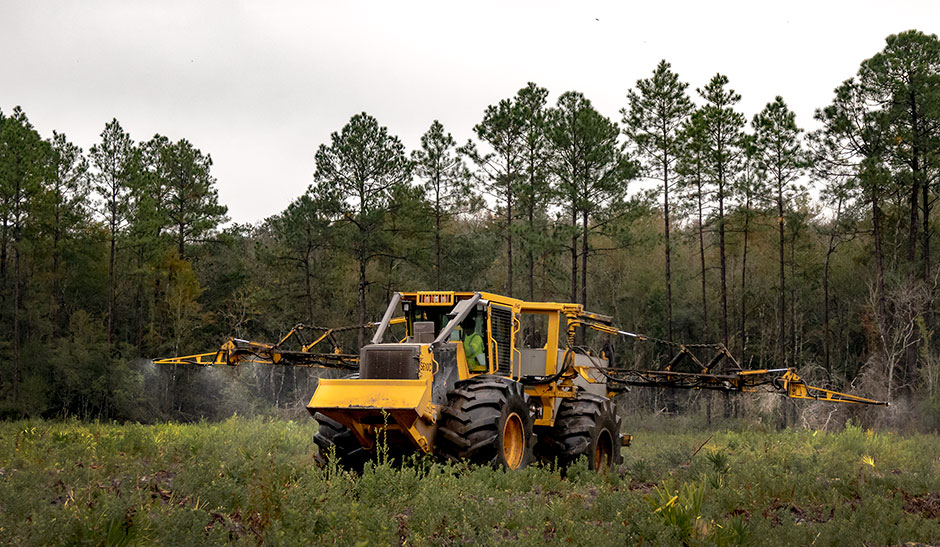
Machine width was probably one of the biggest factors when Donald started dealing with Tigercat. To get to the required width, Tigercat designed an oscillating centre section to accommodate a fixed front axle in order to reduce the overall width of the machine. “So we are able to bring the tires closer into the frame. And that fixed our problem,” explains Donald. Tigercat has incorporated the design into the 602 series skidders in a similar bid to reduce width for tight selective logging applications.
Donald emphasizes the importance of closed cabins with proper climate control and operator protection, recognizing that open cab farm tractors are still used in the industry. The fatigue inducing effects of working in open air during humid summer weather conditions is physically draining and productivity-reducing. A stick thrown up by a tire or a yellowjacket nest poses a real danger.
“I am very concerned about our silviculture business,” says Donald earnestly. “We have the genetics, we have herbicides that target certain plants, we have fertilization. We have all of this but still a lot of the equipment you see on other jobs is the same equipment that has been used for 30 years. So I really appreciate that Tigercat works with me. I have had their people in my shop. It’s a personal relationship. That is the only way I know how to say it. And Tidewater does a good job. Eight years ago, this was a new idea. And if Tigercat built one and it did not work, then that would have been a tremendous loss. They were willing to gamble with me and it means a lot to me. They’ve got more to sell than a piece of equipment. They’ve got people behind it. That’s the key.”
THEY WERE WILLING TO GAMBLE WITH ME AND IT MEANS A LOT TO ME. THEY’VE GOT MORE TO SELL THAN A PIECE OF EQUIPMENT. THEY’VE GOT THE PEOPLE BEHIND IT. THAT’S THE KEY.







